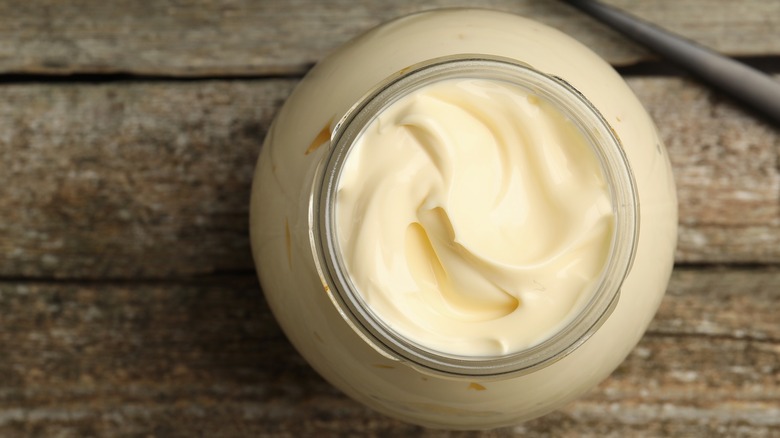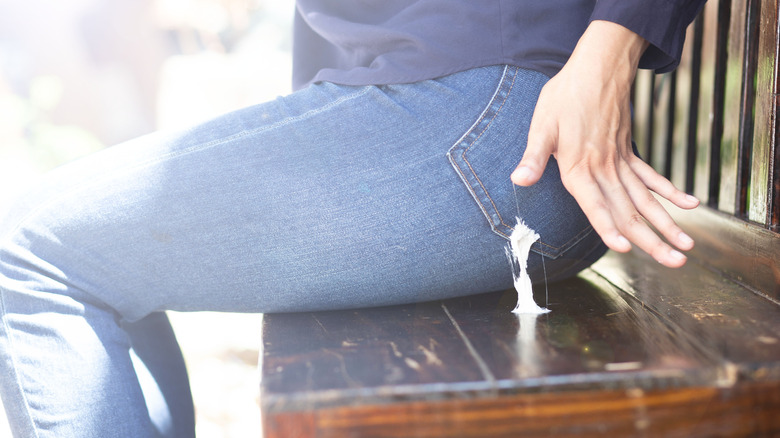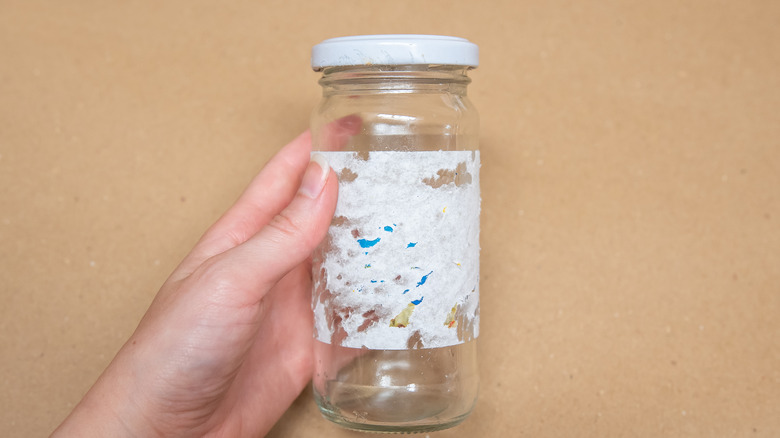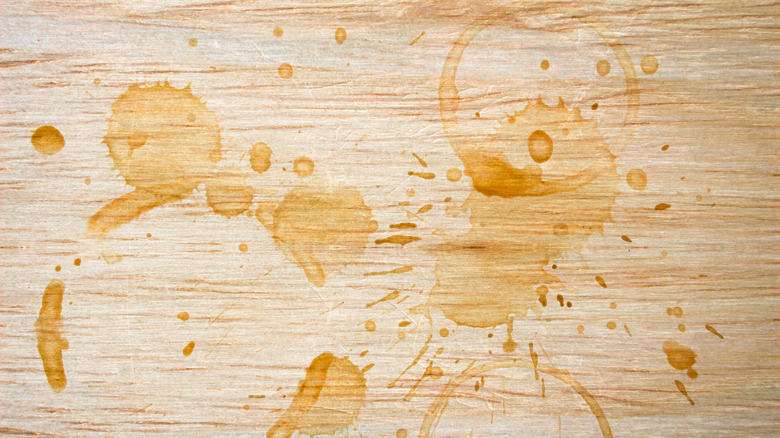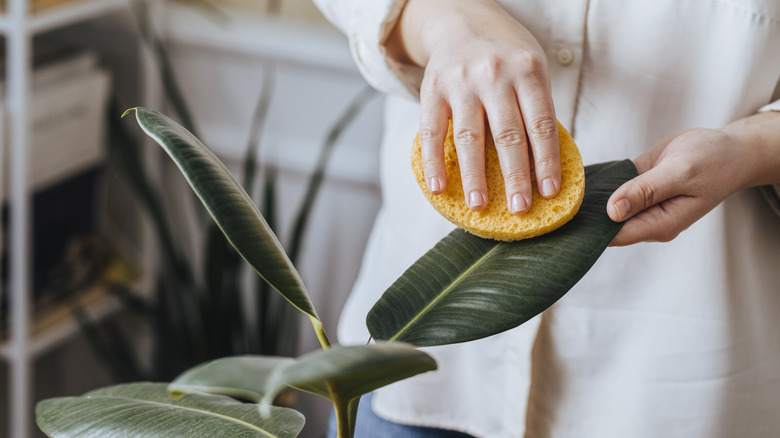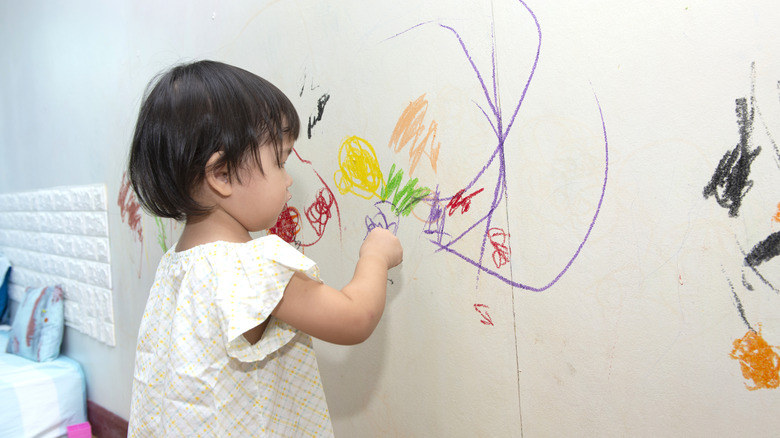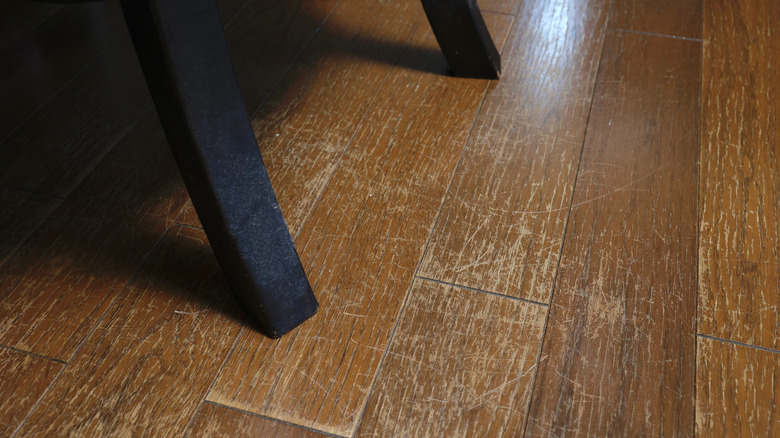All Of The Useful Ways To Use Mayonnaise In And Around Your Home
Put it on your sandwiches or craft a salad dressing out of it, mayonnaise obliges many of your culinary whims. But outside the food realm, the creamy sauce will surprise you with the many ways you can put it to use around the house and garden. Made of vegetable oils, eggs, vinegar, lemon juice, and an assortment of chemical compounds, there's more to mayo than meets the eye. In a pinch, those soothing oils, nourishing eggs, and acidic components can fix one thing or another in your home.
Mayonnaise's healing and problem-solving properties make it indispensable for every homemaker pressed for time. If your wood furniture looks dull and cracks dot the surfaces, a jar of the good stuff is all you need to rejuvenate and polish your table, chair, or hardwood floor. Maybe your potted plants are barely clinging to life with dusty and forlorn leaves, or your favorite rug has gum all over its pile. How about when you can't get sticker residue off of glass? In the absence of commercial cleaning products, mayo is the unsung hero that swoops in and saves the day.
Remove gum from your clothes and carpets
Getting bubble gum out of your clothes is quite a challenge. Even more challenging is when the chewy stuff gets stuck to your favorite rug. But as long as you have mayonnaise in the fridge, there's hope for your carpets and clothes. The various oils and acids in the condiment penetrate the gum texture and dissolve it, making it easier to peel the sticky substance off the fabric. It also has a similar effect on bubble gum stuck on carpets. To get gum out of your clothes and rugs, rub a tablespoon of mayo on the gum stain, making sure to cover it entirely. Allow it to sit for 15 minutes before trying to remove the bubble gum. Use a paper towel to wipe off the mixture of mayo and gum, then rinse under running water.
On the downside, mayonnaise on fabrics can leave behind an oil stain. To banish oil stains from clothing, apply baking soda or hydrogen peroxide to the stain before it sets, then wash the treated area. Removing mayo stains from fabrics like silk, wool, and dry clean-only clothes can be tough. In that case, you should try other methods like freezing to get the sticky substance off.
Remove sticker residue from glass and other surfaces
Removing stickers and sticky labels from surfaces can sometimes be frustrating. If the manufacturer's label or bumper sticker uses acrylic adhesive, grabbing one corner to rip it off leaves ragged debris behind. And now it's seemingly stuck forever. You could try to scrape off the leftover adhesive with your fingernails, but that doesn't always work. This is another situation where mayonnaise is a good solution. To apply, cover the remains of the label with a thick coating of the condiment, and leave it for at least 20 minutes. The oils in the sauce penetrate and break the adhesive's hold on the surface, making it easy to wipe off the sticker.
Mayonnaise as a tape remover works best on non-porous and non-absorbent surfaces such as glass, ceramics, and plastic. These surfaces won't interact with the chemicals and oils in the creamy sauce. However, mayo shouldn't be used on metal surfaces made of aluminum or copper – soaking the surface in hot water is a safer option. The condiment will also leave oil stains on fabrics, so try removing the sticker with hot water or a hair dryer instead.
Remove water stains and rings on wood
Your wood furniture might have a finished layer, but that doesn't protect it from the ravages of moisture. When coasters and tablecloths are scarce, water stains and rings on wood run rampant. These blemishes can either be dark or white, depending on how deep the dampness seeps through the protective finish. But no matter what color the stains are, you can always use mayonnaise to clean wood furniture. Dip a napkin in the oily sauce and slather it over the water discoloration. Letting it sit overnight gives the oil time to push the moisture out. In the morning, wipe off the dry mayo with a wet cloth.
Mayonnaise is one of the best ways to clean wood furniture. It works better than pure vegetable oils because it doesn't dry as quickly. However, the presence of acids and chemicals in the sauce could damage oiled, waxed, or unsealed wood surfaces. Always test the condiment on a small, and hidden, part of the furniture. If it leaves no marks, you can go ahead and apply it to the stains. For dark stains deep in the material, use a hair dryer after the mayo treatment. Adjusting the hair dryer to the lowest heat setting, apply it to the moisture for 10 minutes at a time.
Give potted plant leaves a healthy shine
Potted plants can attract dust faster than you can clean it off. When the ornamental leaves are the main reason you grow the plants, you want to keep them as attractive as possible. The dust specks could block the pores of the leaves, interfering with the vital photosynthesis, respiration, and transpiration processes. Here, mayonnaise rises to the challenge, especially when you have a lot of houseplants. Put a dab of the condiment on a paper towel and gently apply it to the dull leaves. Finish off with a clean, wet cloth to wipe off any residue. The acids in the sauce remove the grime and repel pests, while the oil brings a healthy sheen back to the leaves.
Too much mayo on the leaves, however, could have adverse effects. The thick substance could seal the pores on the leaves. Moreover, excess oil mixed with dust would cover the leaves with thick grime that is hard to clean. So, less is more when it comes to this mayonnaise treatment. You'll also need to repeat this condiment cleansing task every few weeks.
Remove crayon stains
A crayon in the hand of an unsupervised child is asking for trouble. Your kid will express their love for wiggly shapes on every wall, shiny surface, and piece of furniture they can reach. But all these waxes that go into making crayons are absorbed by the surface, making it difficult for you to remove the offending doodles. Mayonnaise is one of the household products you can use to get crayon marks off walls. Before you apply it, test it on a small corner first to make sure it won't leave permanent stains. Put a little of the full-fat mayo on a paper towel and dab it on the crayon stains. The oils in the sauce break down the wax for easy cleaning. Allow 15 minutes before wiping off the condiment and crayon with a damp towel. Then wash off the residue with mild soap and water.
This mayonnaise hack works best on glossy and sealed walls. If you apply it to surfaces with flat or matte finishes, you could have messy oil stains. Baking soda is a good mayo alternative in this case. You also need to keep your pets away from the treated area; otherwise, they may lick the condiment right off the wall.
Treat wood cracks, and polish dull furniture and hardwood
As a biodegradable material, wood requires a lot of polishing, waxing, and continuous maintenance. When the protective finish on a table or chair wears off, humidity and fluctuating temperatures can cause a lot of damage to the wood. The surface turns dull and cracks appear out of nowhere. The same goes for hardwood floors. Heavy foot traffic and lack of waxing render the floor more vulnerable to scuff marks and scratches. Among its many benefits, mayonnaise cleans, heals, and polishes wooden furniture and floors. It contains vegetable oils that repair the cracks and give the wood its natural gloss without making it oily. To apply mayo, put some of the condiment on a clean cloth and work it through the wood surface in circular motions. Leave it for a few days, then polish it with a dry cloth.
Mayonnaise is an excellent fix for scratched wood flooring. But as with other hacks that involve slathering the tasty condiment over a surface, extra precautions need to be taken. For one, keep the treated piece of furniture out of the reach of children and pets in the house. Maybe try locking it in a room until the treatment is over. Another downside is that you can't use the hardwood floor as long as it's covered with the slippery sauce.
